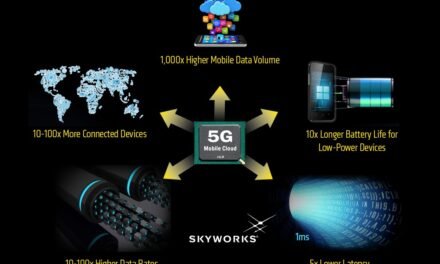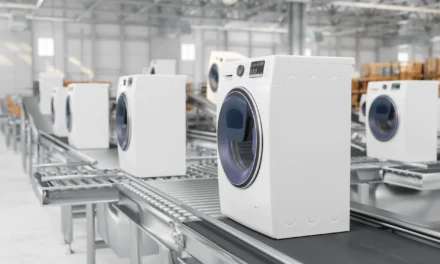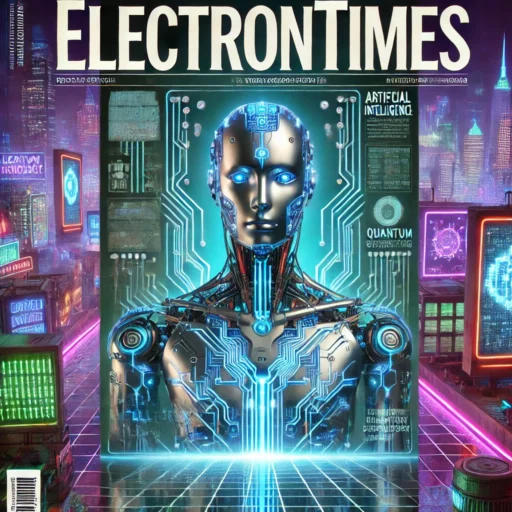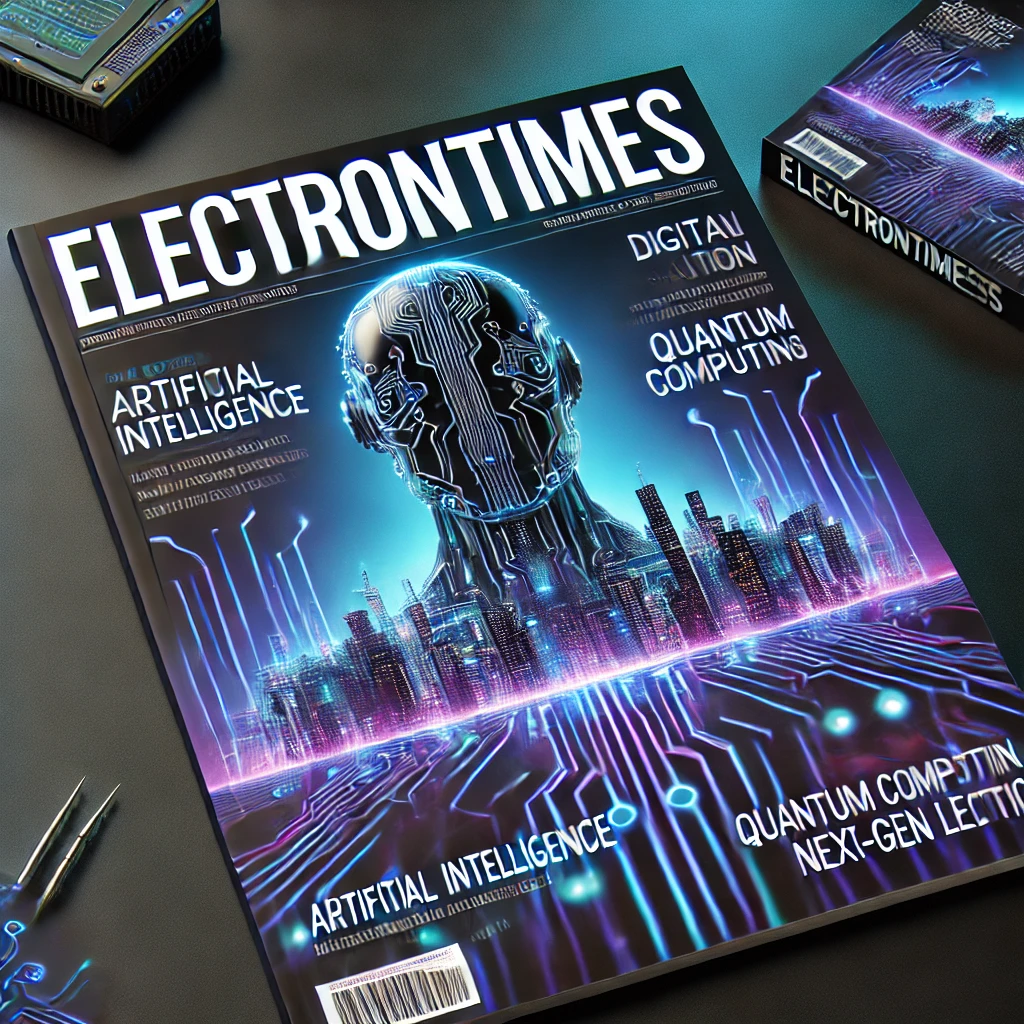Industrial electronics play a crucial role in supporting renewable energy systems by enabling efficient, reliable, and scalable operations across various components like solar power, wind energy, energy storage, and smart grids. These systems rely on advanced electronics to manage energy generation, distribution, storage, and consumption, ensuring that renewable energy can be integrated seamlessly into the broader power grid. Here’s how industrial electronics support renewable energy systems:
1. Power Conversion and Management
Renewable energy sources like solar panels and wind turbines produce direct current (DC) or variable voltage outputs, which must be converted to alternating current (AC) for grid compatibility and efficient use. Industrial electronics play a key role in power conversion and management.
- Inverters: Industrial inverters are used to convert the DC electricity generated by solar panels or wind turbines into AC electricity, making it compatible with the grid or household electrical systems. Grid-tied inverters synchronize the phase and frequency of the output with the grid’s AC power.
- Power Conditioners: These devices ensure that the output from renewable sources meets the voltage and frequency requirements for safe integration into the grid. Power conditioners also regulate the power quality to prevent disruptions in energy supply.
2. Energy Storage Systems
To address the intermittency of renewable energy sources (e.g., wind and solar), energy storage systems are essential for storing excess power during periods of high generation and releasing it when demand is high or generation is low.
- Battery Management Systems (BMS): Industrial electronics enable the operation of advanced energy storage systems, such as lithium-ion batteries and flow batteries. The BMS ensures safe and efficient charging and discharging of batteries, balancing the cells to extend their lifespan and prevent overheating or overcharging.
- DC-DC Converters: These devices adjust the voltage and current to match the storage battery requirements. They enable efficient charging and discharging of batteries from renewable sources, improving the overall system efficiency.
3. Smart Grid Integration
Smart grids use advanced electronics and communication systems to monitor and manage the flow of electricity from renewable sources, ensuring that energy is distributed efficiently and securely.
- Grid Stabilization: Industrial electronics help stabilize grids by managing the variable output from renewable energy sources, using voltage regulators and dynamic reactive power controllers to balance supply and demand in real-time.
- Demand Response Systems: Electronics in smart grids allow for real-time data collection and analysis, helping to predict demand patterns and optimize energy distribution. Demand response systems can shift energy consumption to times when renewable energy generation is higher (e.g., during sunny or windy periods).
- Energy Meters and Communication: Smart meters and communication systems, powered by industrial electronics, provide real-time data to both consumers and utility providers, enabling efficient energy management and integration of renewable energy into households and businesses.
4. Monitoring and Control Systems
The integration of renewable energy into industrial and residential power systems requires sophisticated monitoring and control systems to ensure the efficient operation of renewable energy systems.
- SCADA Systems: Supervisory Control and Data Acquisition (SCADA) systems enable operators to remotely monitor and control renewable energy installations (such as wind farms and solar power plants). These systems collect data on generation, equipment health, and grid stability, allowing for real-time decision-making.
- Sensors and IoT Devices: Sensors monitor the performance of renewable energy systems by tracking factors like solar irradiance, wind speed, battery charge levels, and temperature. Internet of Things (IoT) devices collect and transmit data to cloud-based systems, enabling remote monitoring and optimization of energy production.
5. Power Distribution and Load Balancing
Renewable energy sources often produce fluctuating power levels due to changes in weather, time of day, or season. Industrial electronics help smooth out these fluctuations and ensure that the grid operates efficiently.
- Power Distribution Units (PDUs): These electronic devices help distribute power across renewable energy installations, ensuring that energy is directed appropriately to storage systems, local loads, or the main grid.
- Load Controllers: In situations where renewable energy generation is inconsistent, load controllers balance the demand from the grid with the available supply of renewable energy. They can prioritize the use of renewable energy or switch to backup power sources when necessary.
6. Power Electronics for Efficiency
Power electronics play a critical role in improving the efficiency of renewable energy systems by enabling better energy conversion, regulation, and distribution.
- Maximizing Efficiency: Power converters, such as DC-AC inverters, DC-DC converters, and AC-DC rectifiers, maximize the conversion efficiency of renewable energy systems by reducing losses during power conversion processes. This ensures that as much of the generated renewable power as possible is used effectively.
- High-Efficiency Components: Industrial electronics enable the use of high-efficiency semiconductors (such as silicon carbide and gallium nitride) that handle higher voltages and currents, improving the overall efficiency of renewable energy power systems.
7. Grid Balancing and Frequency Regulation
Industrial electronics help stabilize the grid by providing frequency regulation and balancing the supply of renewable energy with demand.
- Automatic Frequency Regulators: Renewable energy sources, especially wind and solar, can cause fluctuations in grid frequency. Industrial electronics enable automatic frequency regulators to quickly adjust the power flow to ensure that the grid remains stable and within acceptable frequency limits.
- Energy Storage for Frequency Regulation: Energy storage systems, powered by industrial electronics, can act as buffers to store excess energy during periods of high generation and release it during periods of low generation, helping to maintain frequency stability.
8. Hybrid Systems and Microgrids
Hybrid renewable energy systems combine multiple renewable energy sources, such as solar and wind, with energy storage to create a more stable and reliable energy system. Microgrids, which are smaller, localized grids, can operate independently or in conjunction with the main grid.
- Power Management Units (PMUs): These electronics are used to manage the flow of power between different renewable sources, energy storage, and the main grid. They ensure that energy is distributed optimally, depending on availability and demand.
- Microgrid Controllers: Industrial electronics enable the operation of microgrid controllers, which manage the various sources of energy in a hybrid system, ensuring efficient operation and maintaining a constant power supply even during outages or fluctuating renewable generation.
9. Electric Vehicles (EVs) and Renewable Integration
As electric vehicles (EVs) become more integrated into the energy landscape, industrial electronics help optimize the use of renewable energy to charge EVs.
- Charging Stations: Electronics in EV charging stations manage the conversion and distribution of power to EVs. Smart chargers can use renewable energy when available, improving the sustainability of transportation.
- Vehicle-to-Grid (V2G) Systems: Industrial electronics support V2G technology, which allows EVs to store and discharge energy back into the grid when needed, helping to balance renewable energy supply and demand.
10. Forecasting and Predictive Analytics
Industrial electronics help improve the predictability and reliability of renewable energy generation through forecasting and data analytics.
- Data Analytics: Advanced data analytics and machine learning systems process real-time data from sensors and weather forecasts to predict renewable energy generation. This allows grid operators to better manage supply and demand, ensuring that renewable energy is utilized efficiently.
- Predictive Maintenance: By using condition-monitoring sensors and predictive maintenance software, operators can foresee potential failures in renewable energy systems, such as wind turbines or solar panels, and schedule maintenance to avoid downtime.
Conclusion
Industrial electronics are fundamental to the success of renewable energy systems. They enable the efficient conversion, storage, distribution, and integration of renewable energy sources like solar and wind power into the grid. Through power electronics, smart grid technology, energy storage management, monitoring systems, and predictive analytics, industrial electronics help ensure that renewable energy is produced, stored, and used efficiently, contributing to the goal of a sustainable and resilient energy system.
Hashtags
#RenewableEnergy #IndustrialElectronics #CleanEnergyTech #SustainableEnergy #EnergyEfficiency #GreenEnergyElectronics #IndustrialEnergySystems #EnergyOptimization #RenewableTech #SmartEnergySolutions #PowerElectronics #PowerConverters #PowerInverters #PowerManagementSystems #DCACInverters #GridConnectedInverters #SolarPowerElectronics #EnergyConversionElectronics #ACDCConverters #PowerElectronicsForEnergy #SolarEnergy #SolarPower #SolarInverters #SolarPanelTechnology #PhotovoltaicSystems #SolarEnergySystems #SolarPowerManagement #SolarPowerOptimization #SolarElectronics #SolarGridIntegration














